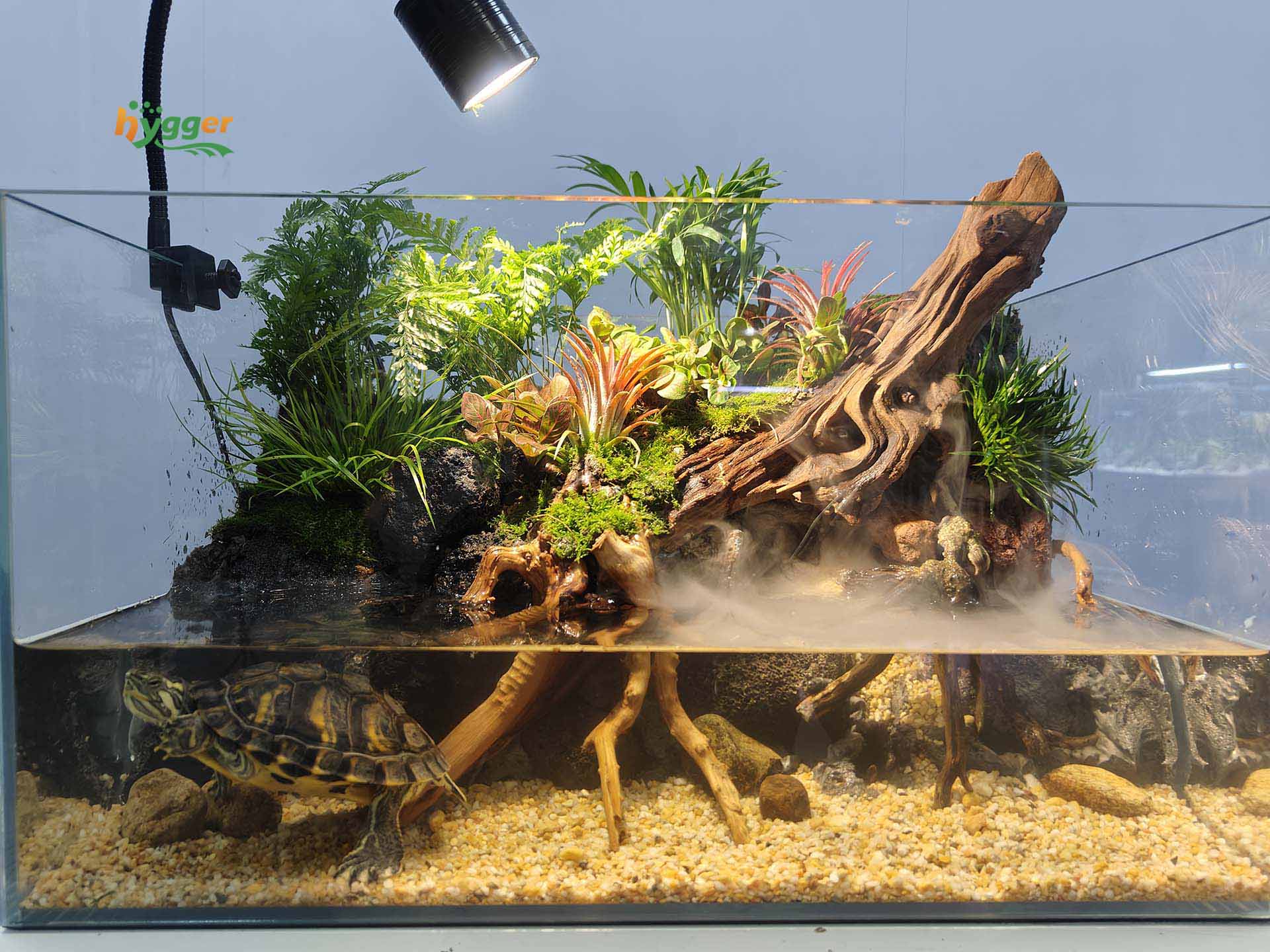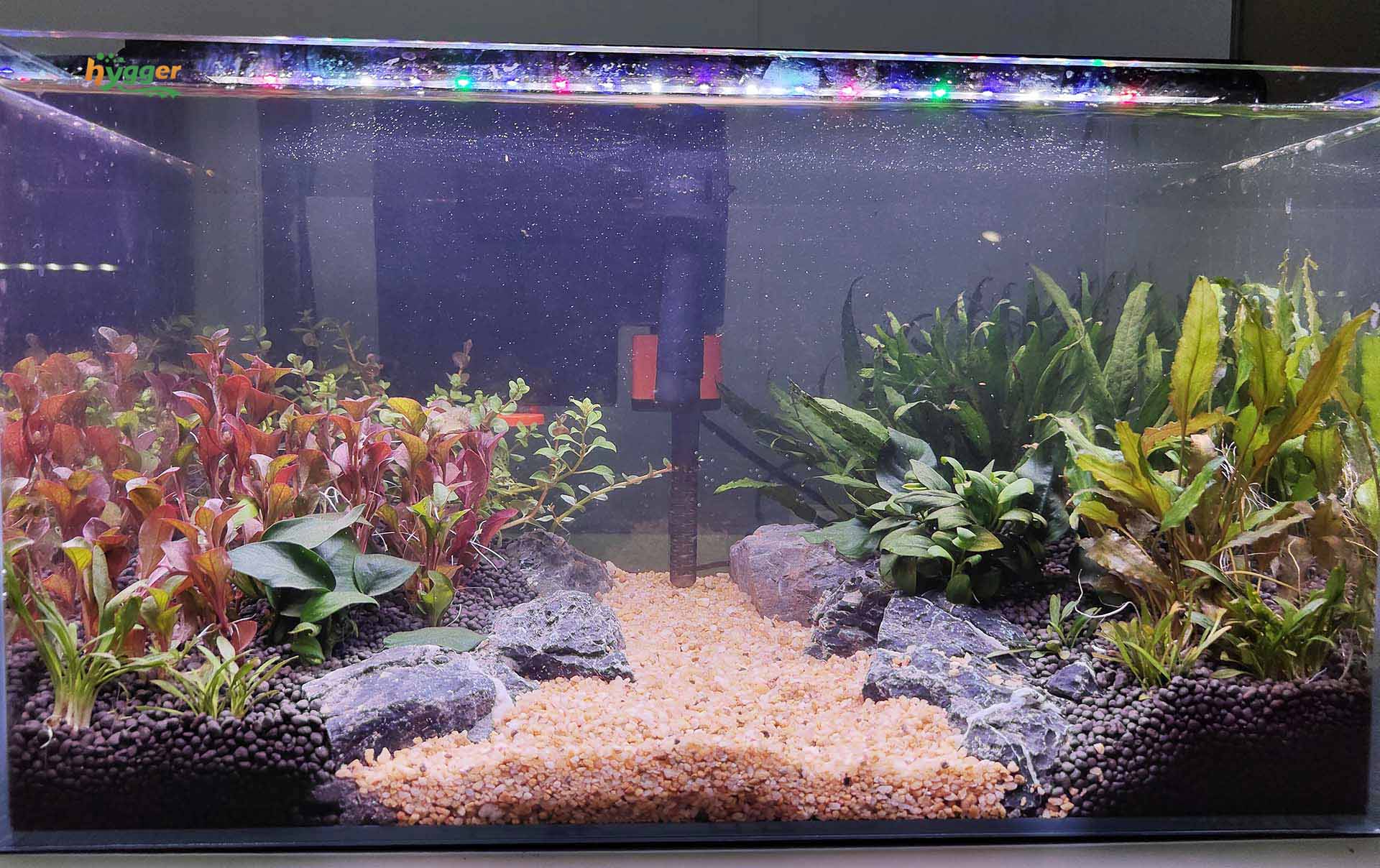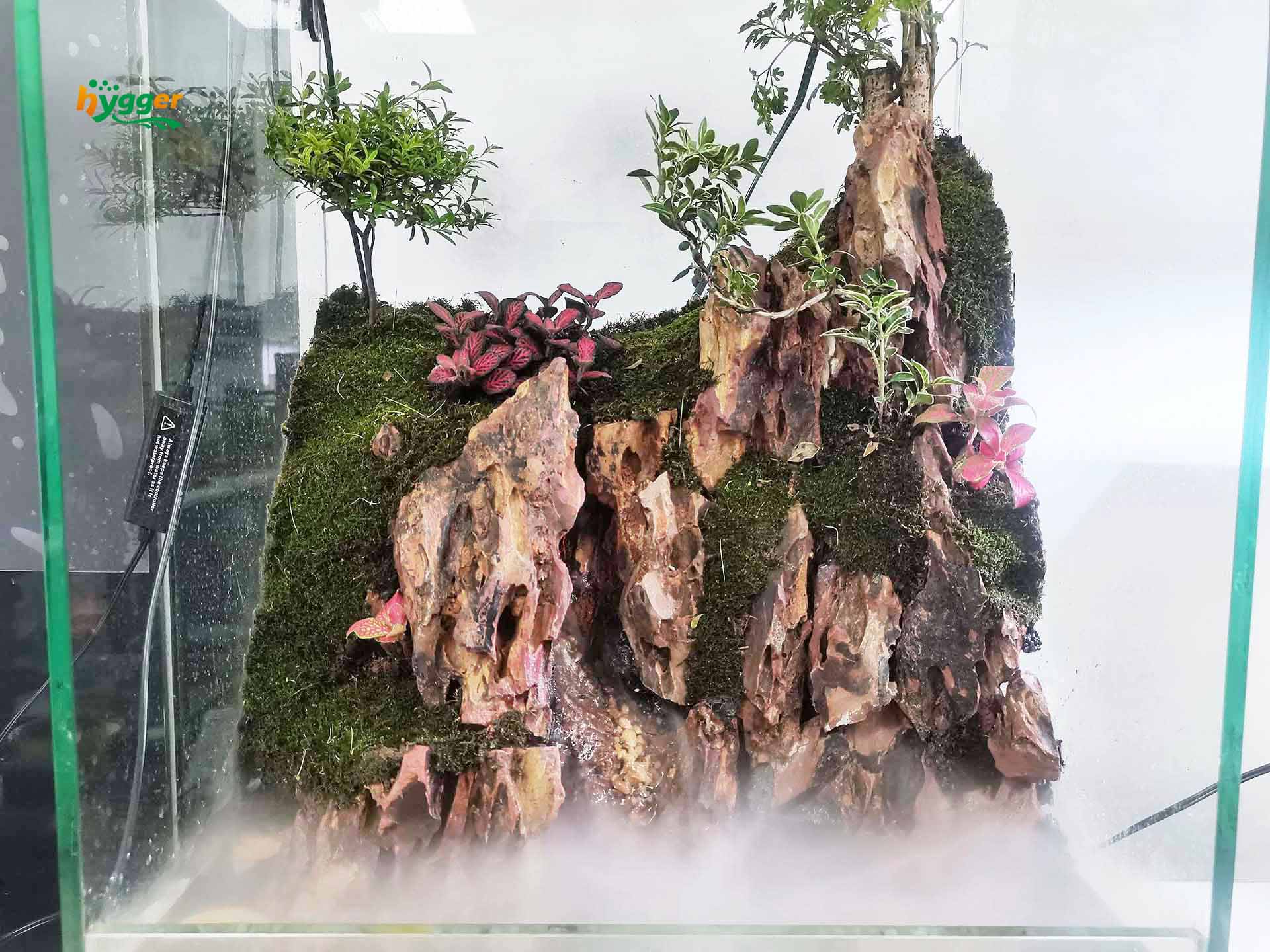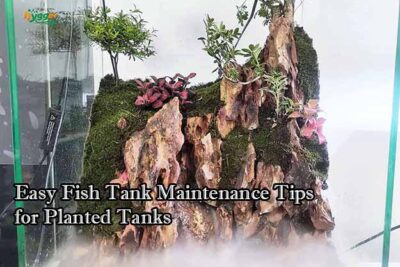Planted tank maintenance can be a rewarding experience, even without the hustle and bustle of aquatic inhabitants. The lush greenery and delicate balance of a planted aquarium can create a serene and captivating environment. However, ensuring the health and vibrancy of the plants within requires dedicated care and attention.
In this guide, we’ll explore comprehensive and easy fish tank maintenance tips for planted tanks devoid of fish or other aquatic life.
Types of planted tank
Planted tanks come in various forms, each catering to different plant species and aesthetics. From the low-tech, low-light setups to high-tech CO2-injected systems, the spectrum is wide.

Low-Tech Planted Tanks
Low-tech setups are ideal for beginners or those looking for a low-maintenance option. These tanks rely on natural light or basic aquarium lighting without additional CO2 injection or complex setups. Plants like Anubias, Java Fern, and Java Moss thrive in such environments due to their ability to adapt to varying light conditions. Low-tech tanks often require minimal equipment, making them cost-effective and straightforward for planted tank cleaning.
High-Tech Planted Tanks
Contrary to low-tech setups, high-tech planted tanks involve sophisticated equipment like CO2 injection systems, high-intensity lighting, and comprehensive nutrient dosing. This setup caters to demanding plant species that require precise conditions to flourish. Plants like Hemianthus callitrichoides (HC) or Glossostigma elatinoides (Glosso) excel in these environments, displaying lush growth and vibrant colors.
However, these tanks demand meticulous monitoring and frequent adjustments to maintain the delicate balance of CO2, lighting, and nutrient levels.
Dutch-Style Planted Tanks
Dutch-style planted tanks focus on meticulous aquascaping and the use of various plant species to create a lush, vibrant display. They often showcase a diverse array of plant species arranged in carefully planned layouts, emphasizing color, texture, and form. Stem plants, carpeting plants, and foreground-to-background varieties are meticulously arranged to achieve a harmonious and visually striking appearance. These tanks require regular pruning and maintenance to uphold the intricate design and prevent overgrowth.
Biotope Planted Tanks
Biotope tanks replicate specific natural habitats, showcasing plants, substrate, and decorations native to a particular geographical location. They aim to recreate a slice of a specific ecosystem, mimicking natural conditions such as water parameters, plant species, and overall aesthetics.
Maintaining biotope-planted tanks involves thorough research on the chosen habitat, ensuring the selection and care of plant species that authentically represent that environment. This setup often involves a deep understanding of the ecosystem’s intricacies to create a realistic and sustainable biotope.
Paludariums
Blending terrestrial and aquatic elements, paludariums feature plants both above and below the waterline, often accompanied by small water features or mini-waterfalls. These setups create a unique visual appeal by incorporating diverse flora and sometimes even fauna, like amphibians or small reptiles.
Paludariums require careful planning to maintain the right balance of moisture, lighting, and humidity for both aquatic and terrestrial plants, offering an intriguing combination of land and water gardening.
How to Maintain a Planted Aquarium
- Lighting: Invest in quality LED lighting that matches the needs of your chosen plants. Though inhabitants aren’t present, plants require specific light spectrums and durations for photosynthesis.
- Nutrient Supplements: Without fish waste, supplementing nutrients becomes essential. Liquid fertilizers or root tabs can provide essential nutrients like nitrogen, phosphorus, and potassium.
- Regular Pruning: Trim dead or decaying leaves to prevent them from rotting and releasing harmful compounds. Pruning also encourages healthy growth.
- Water Changes: Regular water changes are necessary in a fishless tank. Aim for a 25-30% change every two weeks to remove excess nutrients and maintain water quality.

Planted Tank Cleaning
Equipment for Tank Cleaning
- Algae Scraper: Invest in a gentle algae scraper to remove algae without damaging delicate plant leaves.
- Gravel Vacuum: While there are no fish to create waste, debris can accumulate. A gentle gravel vacuum helps in removing excess residue from the substrate.
- Soft-bristled Brush: Use a soft brush to clean hard-to-reach areas and delicate plant surfaces.
Cleaning Tips for Various Plants
- Anubias and Java Fern
Anubias and Java Ferns are versatile plants that attach themselves to surfaces, simplifying the cleaning process. Delicately wiping their leaves with a soft cloth or a gentle brush removes algae buildup without causing harm.
- Carpeting Plants
Maintaining carpeting plants requires careful trimming to prevent debris accumulation. Employing a gentle vacuum or an air blower aids in keeping these plants clean, ensuring their lush appearance without compromising their growth.
- Rooted Plants
When tending to rooted plants, exercise caution around their intricate root systems. Utilize a gravel vacuum around the base of these plants, eliminating debris while safeguarding their delicate roots from disturbance. Careful planted tank cleaning techniques preserve their health and encourage robust growth within the planted tank environment.
Proper Fish Tank Maintenance Tips
Ensuring a thriving fishless planted tank demands conscientious care. Here, a few crucial extra steps contribute to maintaining an optimal environment.
1. Water Testing: Routine water parameter checks remain pivotal. By scrutinizing pH, ammonia, nitrite, and nitrate levels, you maintain a stable, healthy ecosystem, rectifying imbalances promptly.
2. Observation: Regular vigilance becomes paramount. Without fish, the focus intensifies on plant health and potential algae growth. Watch for any telltale signs of imbalance, ensuring prompt corrective actions.
3. Consistent Routine: Establishing a steadfast planted tank maintenance regimen is fundamental. This consistent approach sustains the delicate balance within the tank, fostering plant growth and overall tank health.
4. Adaptation to Unique Conditions: Every planted tank is distinct. Adjust and fine-tune maintenance techniques according to your tank’s specific requirements for sustained vitality and allure.

Supplemental Tips for Maintaining a Fishless Planted Tank
CO2 Injection or Liquid Carbon
Consider supplementing with CO2 injection or liquid carbon to promote plant growth. Even without fish, plants benefit from carbon supplementation, enhancing their photosynthesis process.
Adjusting Light Intensity and Duration
Tweak your lighting settings according to the specific needs of your plants. Some species might require more or less light intensity or duration, so adapt accordingly to prevent algae overgrowth or plant deficiencies.
Dosing Macro and Micro Nutrients
Apart from regular fertilization, ensure that your plants receive adequate macro and micronutrients. This could involve dosing specific nutrients like iron, magnesium, and trace elements to support healthy growth.
Avoid Overfeeding the Plants
While it might be tempting to add extra nutrients, overfeeding your plants can lead to imbalances and algae blooms. Follow the recommended dosage and monitor plant health regularly.
Implementing a Blackout Period
Occasionally implementing a short blackout period (around 24–48 hours) can help reset the tank, particularly if you notice excessive algae growth. This can curb algae proliferation without harming the plants.
Conclusion
Maintaining a fishless planted tank requires dedication, but the results—a serene aquatic oasis—are well worth the effort. By understanding various tank types, mastering maintenance basics, and employing meticulous planted tank cleaning techniques, you can foster a thriving plant haven.
Remember, each tank is unique, so adapt these tips to suit your ecosystem. With consistent care, observation, and tailored attention, your fishless planted tank will flourish into a captivating, harmonious landscape.
